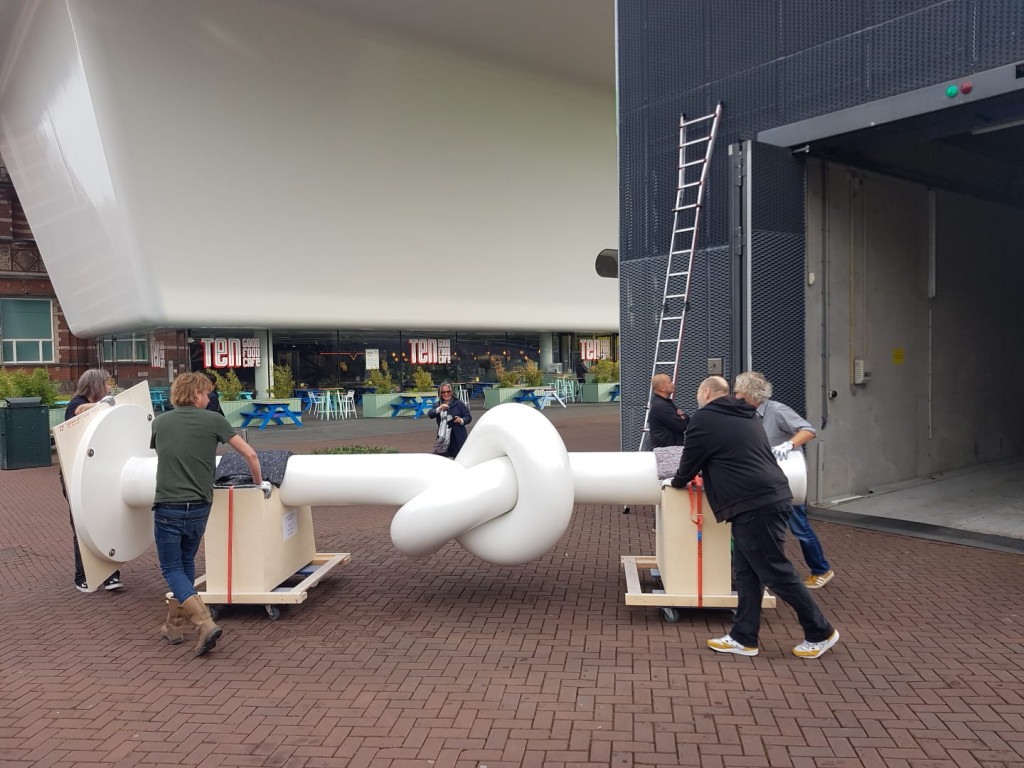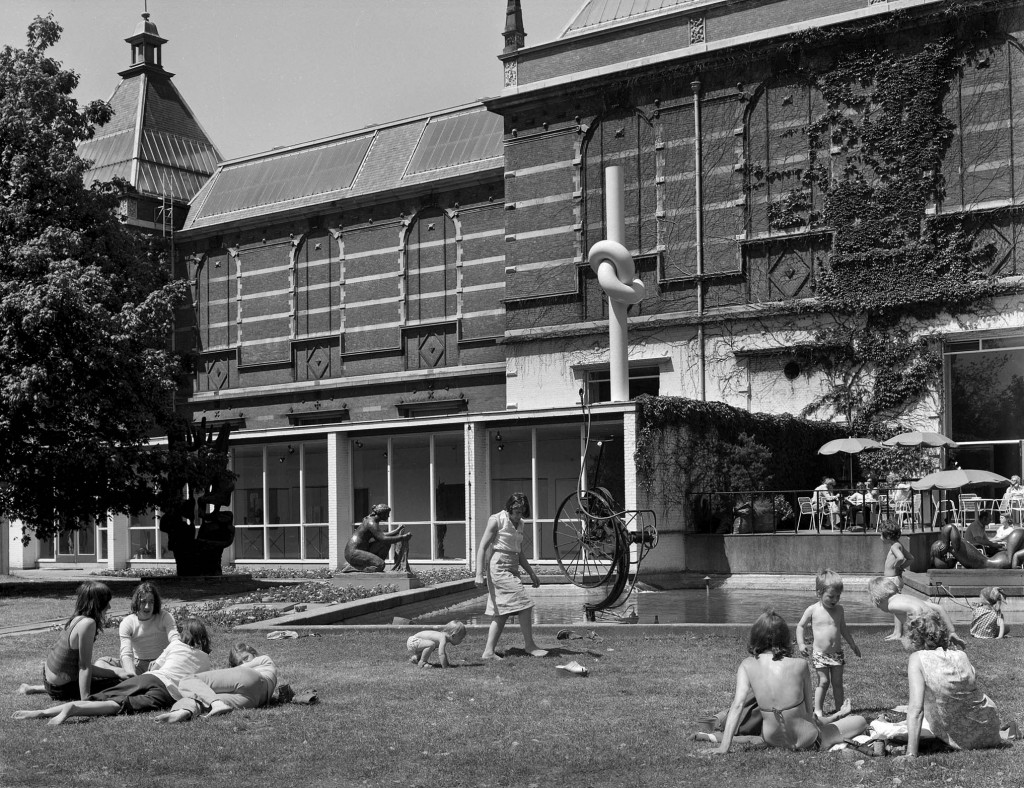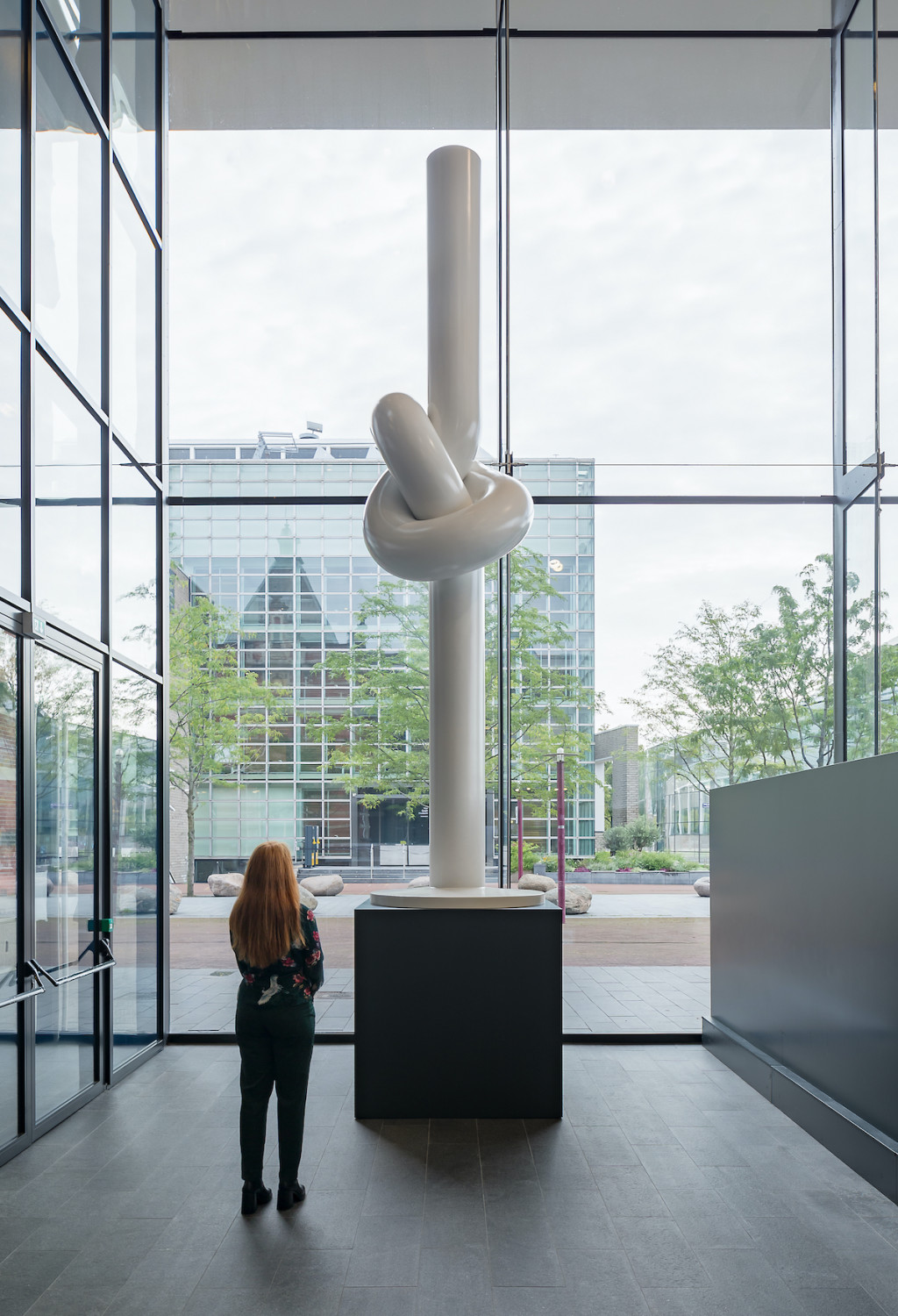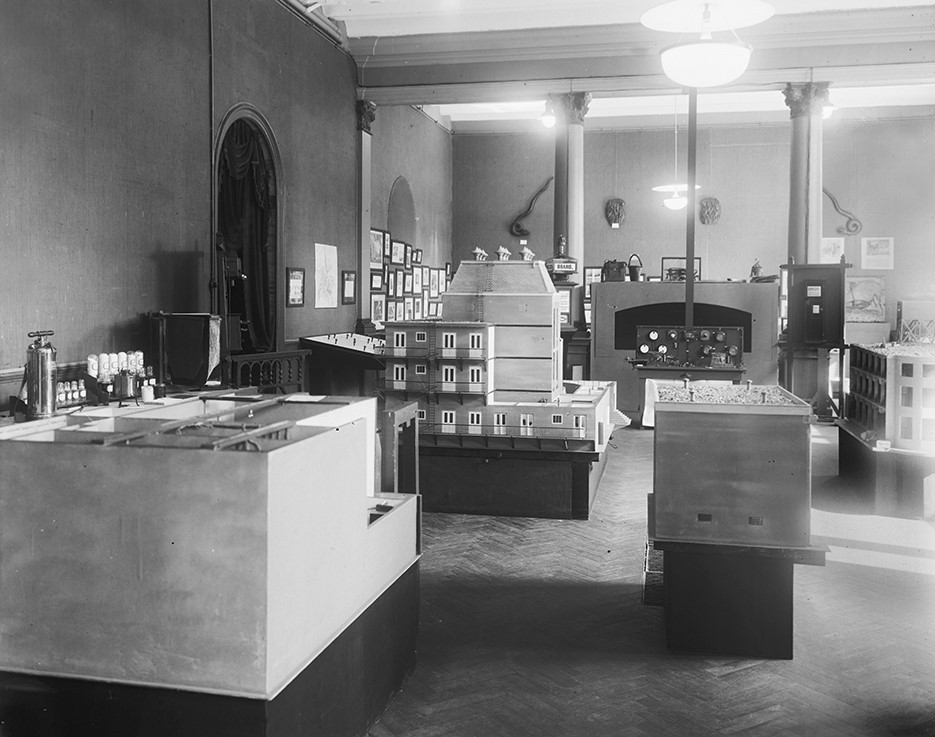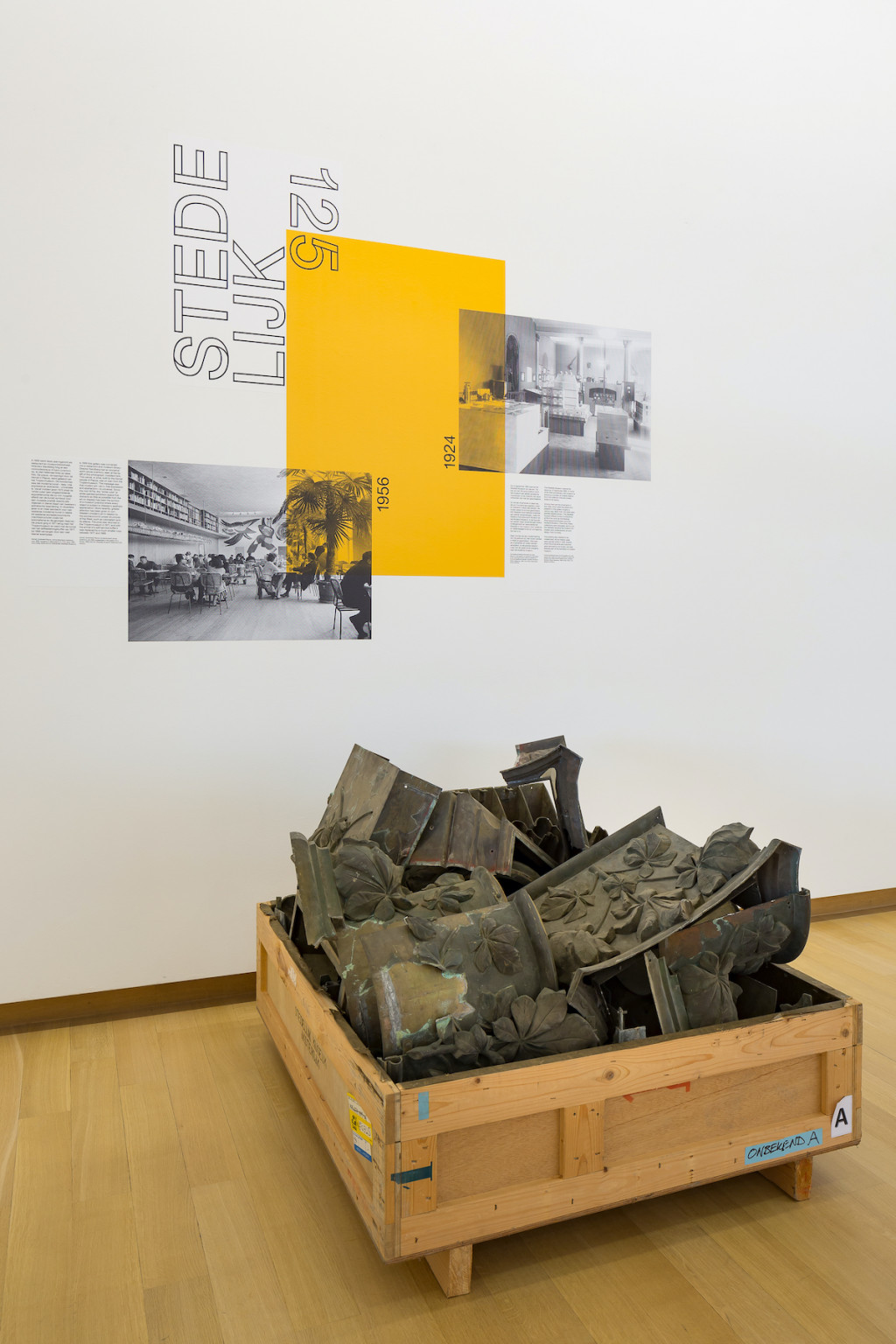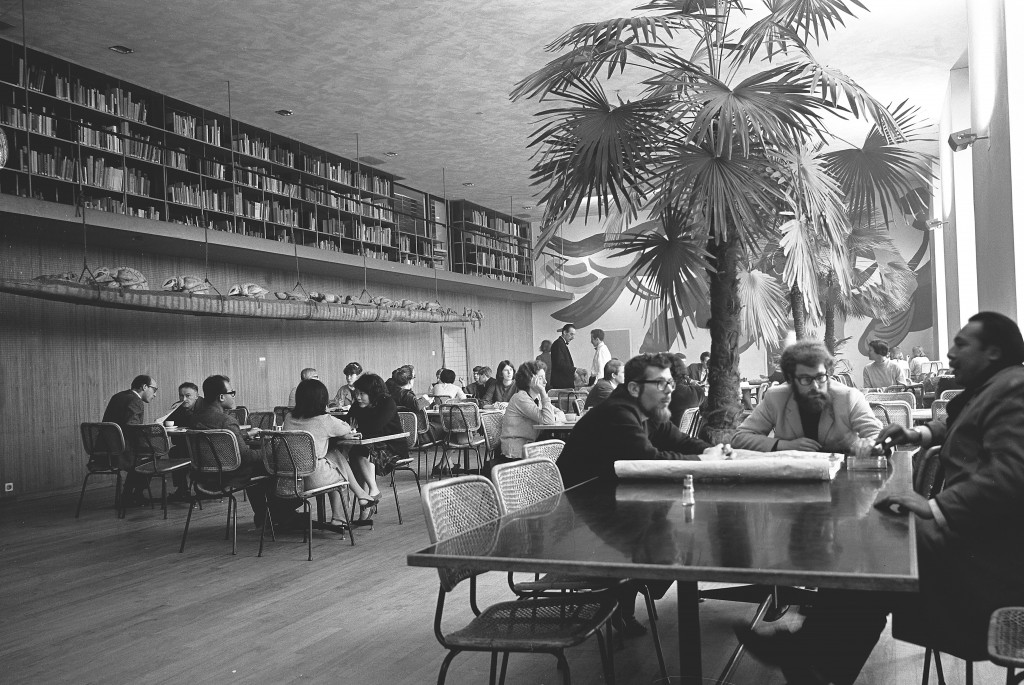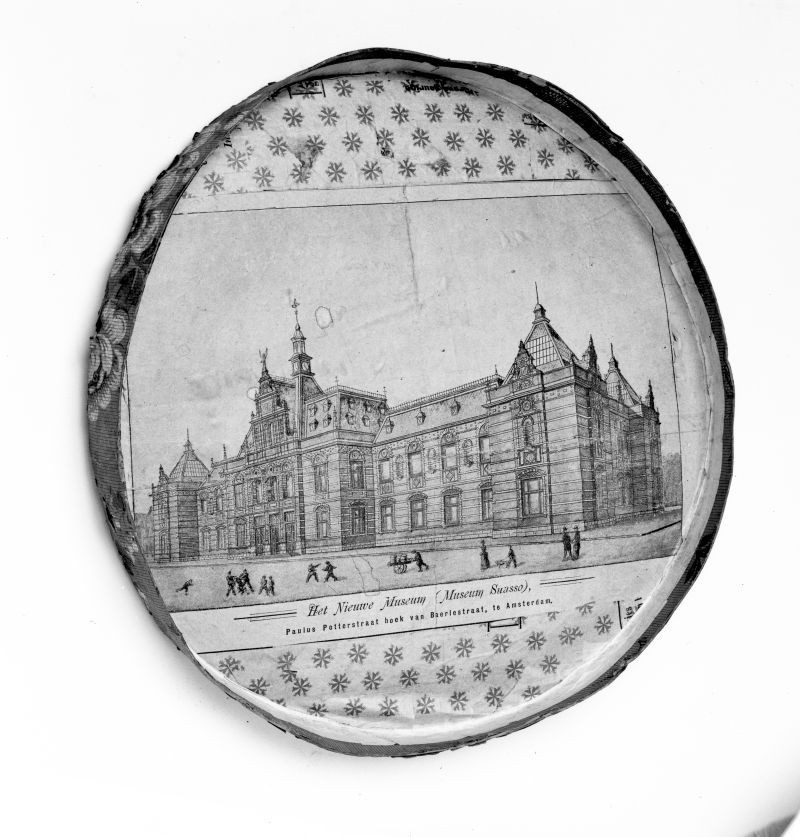125 years
The Stedelijk Museum opened its doors on 14 September 1895. In honor of its 125th anniversary, the museum is showing a number of notable works from the collection that are closely linked to its history.
Encore un Instant de Bonheur by Martial Raysse
(Still a Moment of Happiness (Modern Sculpture))
This sculpture by French artist Martial Raysse from 1965 stood on this exact spot in the 1960s and ’70s. The building’s public entry at the time was here, on the Paulus Potterstraat, and the statue—with its vibrant colors, heart shape, and lights—functioned as a flamboyant neon sign marking the entrance to the museum. The English title of this work is Still a Moment of Happiness (Modern Sculpture), but by “modern” Raysse meant that he was showing in particular the unblemished side of consumerist society. “I wanted a new world, sterile and pure, one that, in the applied techniques, seamlessly matched the technical achievements of this new era.” Martial Raysse belonged to the Nouveaux Réalistes, a group of French artists who, similar to the American pop artists, focused on reflections of modern society in their work. In 1965 a solo exhibition dedicated to his work was held at the Stedelijk Museum. Other work by Raysse can be seen in Stedelijk BASE: the painting Peinture à Haute Tension (1965) and the sculpture Nebuleuse Prisunic (1959).
Overhand Knot by Shinkichi Tajiri
Overhand Knot (1971) is a work by the Japanese American sculptor Shinkichi Tajiri. The son of Japanese parents, Tajiri grew up in the United States. He left for Paris after the Second World War to study with Fernand Léger and Ossip Zadkine. At the end of the 1950s he moved to the Netherlands, together with artist Ferdi Jansen. He is considered among the most important sculptors in the Netherlands of the time. From the late 1960s onwards, Tajiri made numerous artworks in the shape of a knot, some in bronze and others in plastic, like the one shown here. For him, the knot is a statement: a clear, universal form that anyone can understand. “Put a knot in the middle of the jungle, and everyone knows what it means.”
Former architectural decor
Among the notable objects from the collection are these ornaments, which adorned pillars and pilasters in gallery 0.1 (now the IMC-Gallery) roughly a century ago. Back then, the walls were painted reddish-brown. The Stedelijk housed different kinds of collections at the time, such as the Medical Pharmaceutical Museum and the Multatuli Museum. Over time, these collections were relocated, and in turn the Stedelijk became the museum for modern and contemporary art and design that it is today. The building also needed to be modernized. All the interior walls were painted white in 1938. Exactly when the ornaments and columns were removed is not known, but was likewise part of the transition to modern museum. The former architectural decor consisted of copper alloy capital and base ornaments on pillars and pilasters and walls colored reddish-brown. The architect of the building was Abraham Willem Weissman. It was finished in 1895.
Blow up of canoe or proa
In 1956 gallery 0.1 was converted into a restaurant and museum library. Director Sandberg had an ancestral spirit canoe (uramun), seen at the far left of this photograph, installed here. This canoe, or proa, built by the Asmat people of Papua, was on loan from the Tropenmuseum. The message was that modern art—as in, free expression and abstraction—is universal. Since the mid-1970s, the “white cube” (a white-painted exhibition space that distracts as little as possible from the art on display) has been the symbol of a museum practice where every object is subject to (Western) aesthetic appreciation. More recently, greater attention has been given to non-Western (modern) art in relation to the socioeconomic power structures of the West, such as colonialism and its effects. The proa was returned to the Tropenmuseum in 1971, and with the arrival of a self-service buffet it was replaced by a much smaller copy between 1977 and 1988.
Hat box lid
This hat box lid commemorates the establishment of the Stedelijk Museum. Glued onto the lid is a reproduction from 1893 of a drawing of the museum, which was then being built. The building opened on September 14, 1895. The inscription, “Museum Suasso,” refers to Sophia Adriana Lopez Suasso-de Bruyn, who left her collection of furniture, jewelry, porcelain, costumes, paintings, and other assets to the municipality of Amsterdam. She did this on the condition that they would be used to found a museum – the beginning of the Stedelijk Museum’s collection. Over time the museum dispensed with her collection, due to its varying quality and the absence of real masterpieces. A number of objects ended up in the Amsterdam Museum, but her family coat of arms and a commemorative stone are still visible on the facade and old entrance hall of the Stedelijk.


